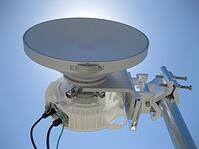Why Wireless
Wireless backhaul, also known as fixed wireless, technology has become a standard means of creating a microwave link between locations (whether building to building, field locations to a network presence, connecting network / fiber segments, etc.) and/or for connecting devices (like IP video cameras, SCADA devices, client devices, phones, two-way radio / pagers, etc.) to networks.
Wireless backhaul can be in point to point wireless (also known as, ptp wireless), point to multipoint wireless (this includes WiMax and LTE), or wireless mesh configurations. Wireless bridges can be licensed microwave links or unlicensed wireless Ethernet bridges. A licensed microwave link or wireless Ethernet bridge can provide throughput as low as 10Mbps up to GigE (with gigabit wireless).
Wireless backhaul provides many advantages over traditional hard wire connections:
- More Bandwidth than what telco's can provide
- Low Latency (<1ms - perfect for VoIP, Video backhaul, etc.)
- Connectivity where you need it (Last Mile)
- Lower Costs (extremely high ROI / TCO)
- Greater Security (exceed DOD specifications)
- Eliminate telco dependency
- Greater Reliability (up to 99.999% up time)
- Faster Deployments (days rather than months)
- No need for "Right Away" paths
- Direct Communications (no central office switching or shared lines)
- No term contracts
- Control your own network
- Wireless Mobility - Mobile & Roaming Applications
- Ability to redeploy hardware
- Wireless Redundancy - True redundant networks






